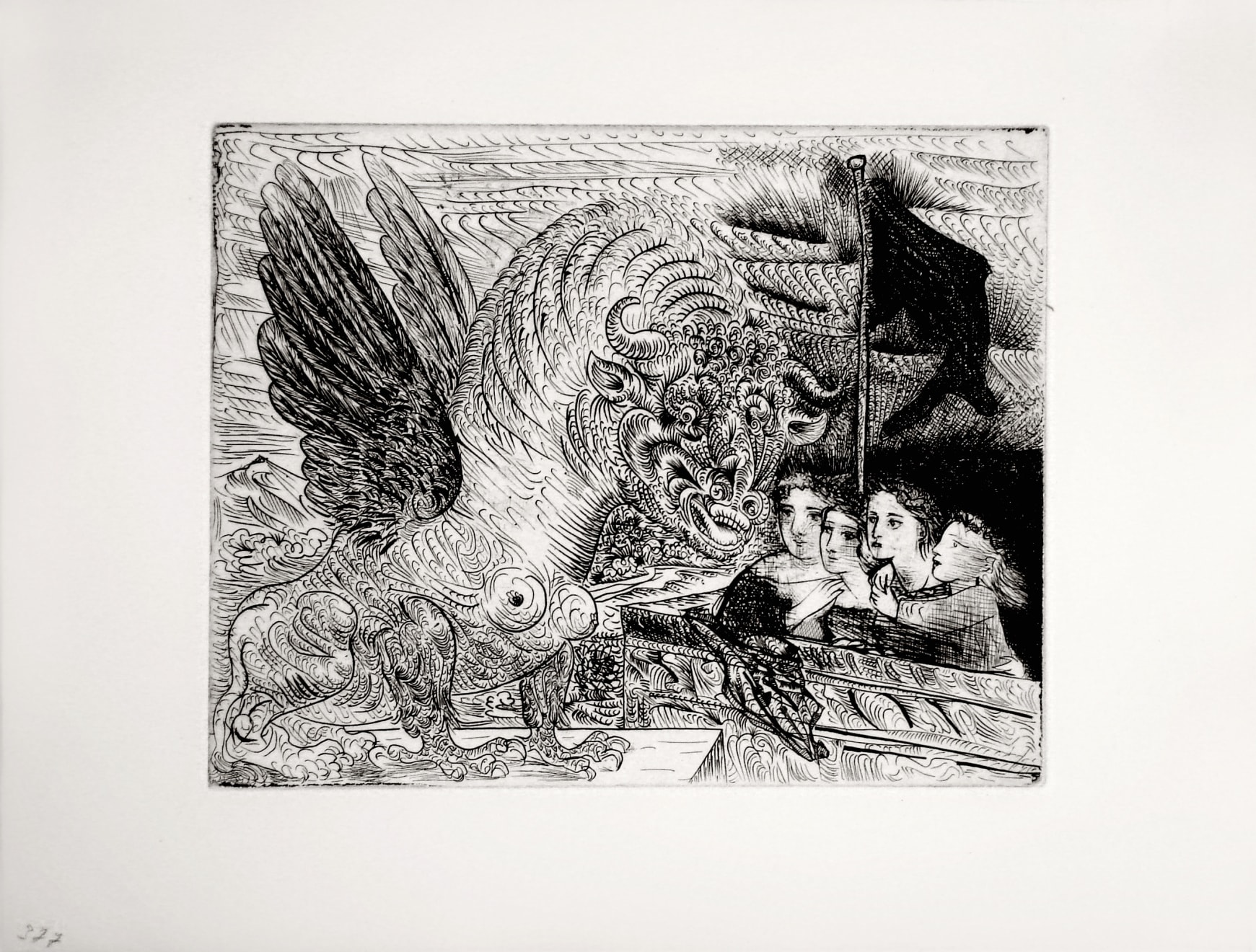PABLO PICASSO
Literature
Picasso has conflated several mythical figures in one in Harpye à Tête de Taureau, et Quatre Petites Filles sur une Tour surmontée d'un Drapeau noir: the Harpy, the Sphinx, and the Minotaur. This fearsome creature looms menacingly over the four innocent and defenseless children in the boat floating nearby. The young girl at the far right bears a clear resemblance to Marie-Thérèse Walter, Picasso’s mistress at the time. As noted by Picasso scholar Brigitte Baer, the young children all wear wreaths of flowers on their heads in keeping with the myth of the Minotaur; virginal youths were sacrificed to the creature and are said to have been adorned with such garlands in preparation for the ritual.i
This plate was created in December of 1934, around the time Picasso learned that Marie-Thérèse was pregnant, and shares the complex iconography and psychological drama of later plates in the suite that include imagery of the Minotaur. This creature begins to frequently appear in Picasso’s work around 1933 and quickly became an iconic aspect of the artist’s imagery. As pointed out by Deborah Wye, “the mythic Minotaur became Picasso’s alter ego…[and] gave him a vehicle for depicting sexuality and violence, and for expressing rage and guilt”.ii
Stylistically, the deftness of execution and complexity of this etching also show the influence of master printer Roger Lacourière, who had an enormous impact on Picasso’s development as a printmaker. Though the exact point at which their collaboration began is disputed, all agree that it was underway by 1934.
The current impression is from the edition of 260 printed on Montval laid paper watermarked “Vollard” and “Picasso”. (There was also an edition of fifty with wide margins and a separate watermark, and a small edition of three.) It was printed by Roger Lacourière in late 1938 or early 1939. The untimely death of Ambroise Vollard in the summer of 1939 delayed their commerce until 1948 when the prints were acquired by dealer Henri Petiet through the Vollard estate.
i Picasso the Printmaker: Graphics from the Marina Picasso Collection, Dallas Museum of Art, 1983, 94.
ii A Picasso Portfolio: Prints from The Museum of Modern Art, The Museum of Modern Art, New York, 2010, 46.
